Tawny vs Ruby Port: What’s the Difference?
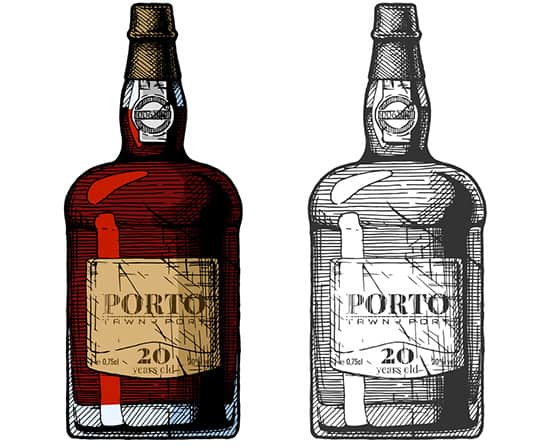
Port wines come in a variety of styles and today I'll explain the key differences between the Ruby and Tawny varieties.
There are a lot of similarities but some important distinctions to be made that I'll outline below.
Let's learn how to easily tell your Tawny from your Ruby.
Ruby vs Tawny Port: A Quick Answer
The key difference between Ruby and Tawny Port lies in their aging process and resulting flavor profiles.
Port wines can be defined by the way they are aged, be it the aging vessel used (oak barrel, bottle, vat, cask) or the maturation time.
The differences between the flavor profiles and overall characteristics of Tawny and Ruby Port are a direct result of their distinct aging techniques.
Ruby Port is younger, fruitier, and retains a deep red color, as it's aged for a shorter period (usually 2 or 3 years) in large oak vats to preserve its vibrant, grapey character.
On the other hand, mellow, rich Tawny Port is aged for longer periods of 3 years up to 40 years in small oak barrels, allowing it to develop a nutty, caramel complexity and a characteristic amber 'tawny' hue.
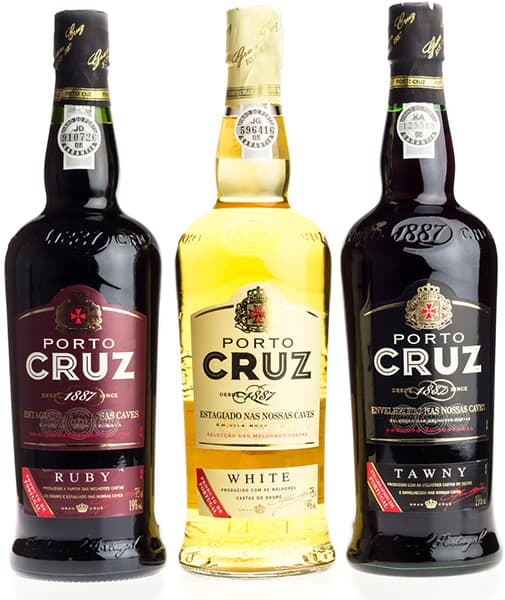
The Production Process for Ruby and Tawny Port
Both Ruby and Tawny Port start their journey in the vineyards of the Douro Valley in Portugal. The grapes, often a blend of several indigenous varieties, are harvested and then crushed to start the fermentation process.
The crushed grapes and juice, known as must, are traditionally stomped by foot in large stone or concrete tanks called lagares, although modern wineries may use automated methods.
The fermentation process is where the sugar in the grapes is converted into alcohol by yeast. However, unlike most wines, the fermentation of Port is intentionally stopped early by adding a neutral grape spirit, or brandy.
This process, known as fortification, kills the yeast and leaves a significant amount of residual sugar in the wine, giving Port its characteristic sweetness. The fortified wine is then ready for the aging process, which is where the paths of Ruby and Tawny Port diverge.

Tawny, ruby and white port wines
Grapes Used in Ruby and Tawny Ports
Port is typically a blend of several grape varieties, with over 80 varieties permitted for Port production.
However, five primary grapes are most commonly used in both Ruby and Tawny Port. These include:

The Key Differences Between Ruby and Tawny Port
There are certainly a lot of similarities between the two Port wines. The grapes, the alcohol content, and the winemaking process are just a few.
Here's where things change.
Tawny and Ruby Port Aging Processes Compared
As we've seen, the key differences in the characteristics of Tawny and Ruby Port are a result of the different aging processes. Let's take a close look at the different aging techniques.
Tawny Port Aging Process
Tawny Port is a distinctive wine, created by combining various wines at different maturation stages.
As the wine ages in compact wooden casks, its original red hue slowly transitions to a range of tawny shades, exuding a scent of dried fruits and timber.
This style encompasses unique categories like Tawny Reserve, Tawny with Age Indication (10, 20, 30, and 40 years), and "Colheita", a wine derived from a single vintage year. These wines are all set for consumption upon bottling.
The worth of matured Tawny Port is associated with its unique aroma compounds, which are developed during the aging process in small wooden barrels that permit oxygen entry.
This process, known as oxidative aging, is affected by elements such as oxygen concentration, temperature, and pH levels. These factors are all closely monitored during the process.
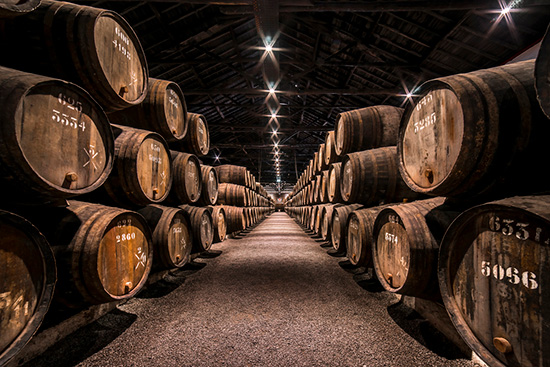
A port wine cellar containing the smaller casks used for aging tawny port.
Ruby Port Aging Process
Ruby Port wines are recognized for their vibrant red hue, robust structure, and often retain a fruity essence when they're ready for consumption.
These wines undergo an aging process of 3 to 5 years in sizable wooden barrels, referred to as "balseiros", which can hold anywhere from 10,000 to 100,000 liters.
The flavor profile of these wines evolves from a potent fruity, even spirited nature when they're extremely young, to a rich, fruit-infused ruby wine after up to 5 years of wood aging.
There are certain exceptional Ruby Port wines, termed as Vintage Port wines, that undergo an extensive aging process in the bottle, resulting in lighter red wines that often retain a very fruity character, even after aging for twenty years or more.
Vintage Port wines are matured in wooden barrels for a couple of years, followed by a significant aging period in a bottle, known as reductive aging (10 to 50 years or more prior to consumption).
This process gives them a distinct character compared to wines aged solely in wooden barrels. Despite this, these wines maintain their fruity flavor and red coloration.
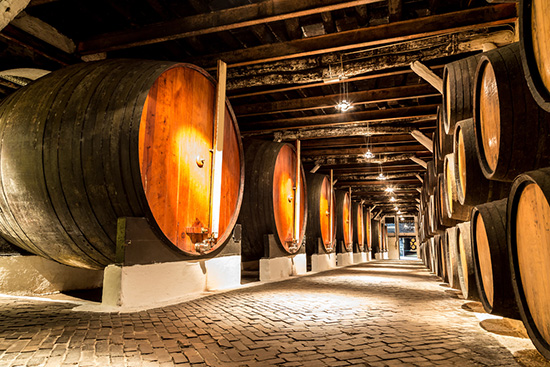
A port wine cellar containing the larger oak vats used for aging ruby port.
Key Differences in the Aging Process:
- Tawny Port is aged in small oak casks while Ruby Port is aged in large oak vats.
- Tawny Port is aged for long periods of up to 40 years while Ruby Port usually ages for between 2 to 5 years.
Tawny and Ruby Port Characteristics Compared
So, how do these different aging processes affect the color, aroma, and taste of Ruby and Tawny Port wines?
Ruby Port Characteristics
Ruby Port is typically characterized by its bold, fruity flavors. It often exhibits notes of ripe red and dark fruits such as cherries, blackberries, plums, and raspberries.
The wine's sweetness is balanced by its robust structure and tannins, resulting in a wine that is both rich and balanced.
Some Ruby Ports, especially those that have been aged for a longer period, may also exhibit subtle hints of chocolate, spice, and wood, adding complexity to the wine's flavor profile.
The aroma of Ruby Port is usually quite vibrant and fruity, reflecting the wine's flavor profile. Scents of ripe red and dark fruits are often prominent, along with possible hints of spice and wood, especially in aged Ruby Ports. The wine's aroma can be quite intense, filling the senses with its rich, fruity scents.
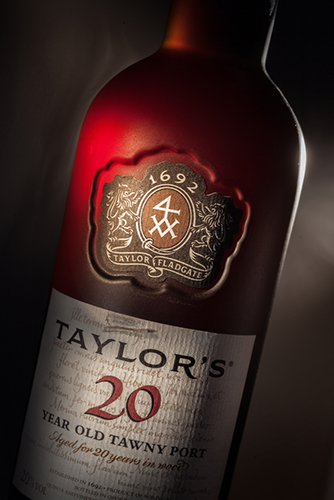
Tawny Port Characteristics
Tawny Port is known for its rich, nutty, and caramelized flavors. As it ages, the wine develops a broad spectrum of flavors, including notes of dried fruits like figs, raisins, and prunes, along with hints of butterscotch, caramel, and toasted nuts.
Some aged Tawny Ports may also exhibit subtle undertones of chocolate, honey, and spices, adding to the complexity of the wine's flavor profile.
The aroma of Tawny Port is typically warm and inviting, reflecting the wine's rich and complex flavors. Scents of dried fruits, nuts, caramel, and wood are often prominent, creating a bouquet that is both complex and harmonious.
In aged Tawny Ports, the aroma can be quite intense and multifaceted, revealing new layers of scent with each sniff.
Tawny Port is characterized by its tawny color, which can range from a light amber to a deep reddish-brown, depending on the length of aging.
The wine is typically medium to full-bodied, with a smooth and velvety texture. Tawny Port is aged in wooden barrels, which allows for gradual oxidation and evaporation, leading to the wine's characteristic tawny color and complex flavors.
The wine's sweetness is balanced by its acidity, resulting in a wine that is both sweet and slightly tart.
Key Differences in the Characteristics:
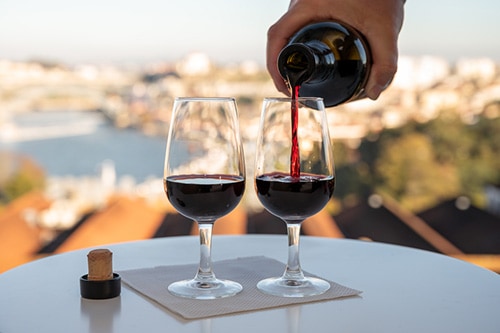
Tawny and Ruby Port Prices Compared
The price of both Ruby and Tawny Port wines can vary greatly depending on factors such as the brand, the quality, the age, and the specific type of Port.
However, generally speaking, Tawny Port tends to be more expensive than Ruby Port. This is primarily due to the longer aging process that Tawny Port undergoes, which can add complexity and nuance to the flavor, and is often reflected in the price.
For example, a basic Ruby Port, which is typically aged for 2 to 3 years, might cost around $15 to $20 per bottle.
On the other hand, a Tawny Port, which is aged for a minimum of three years and can be aged for much longer, might start at around $20 per bottle for a basic Tawny and can go up to several hundred dollars for a Tawny Port that has been aged for several decades.
However, it's important to note that there are also high-quality Ruby Ports, such as Vintage Ports, that can be just as expensive as Tawny Ports. These Ruby Ports undergo a considerable aging process in the bottle, which can also add complexity to the flavor and increase the price.
When to Choose Tawny or Ruby Port?
Choosing between Tawny and Ruby Port depends on several factors including the occasion, your budget, the food you're pairing it with, and of course, your personal taste preferences. Here's how and when to choose each.
Occasion:
Price:
Food Pairing:
